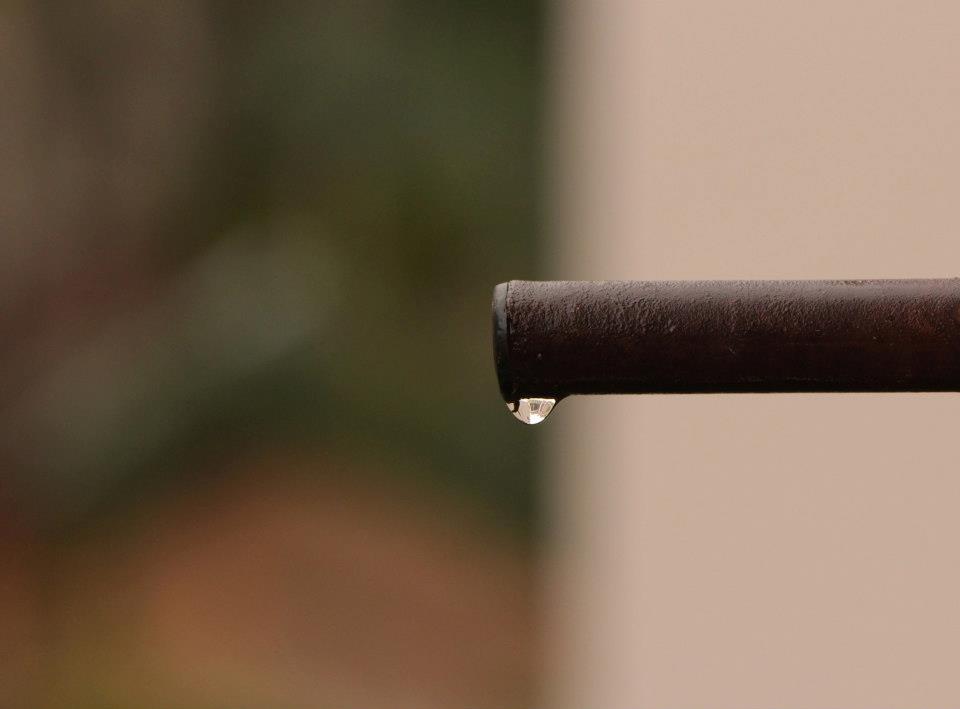From the serious to the absurd, water has featured across a breadth of movies, both in Hollywood and Bollywood.
BBC's Planet Earth series was the most expensive documentary series ever made by the BBC, with a budget of 16 million pounds. Four out of the eleven episodes in this series focussed on water - Fresh Water, Ice Worlds, Shallow Seas and Ocean Deep.
Water and a city by Swati Dandekar traces the journey of water into and out of homes in Bangalore, a bustling Indian city bursting at the seams. Along this journey, the film looks at other issues closely related to water, such as access to water for the poor, pricing and metering of water and urban India's relentless exploitation of water to meet the needs of a growing population with scarcer resources.
Erin Brockovich is a Hollywood movie about an unemployed single mother who becomes a legal assistant and stumbles on a power company knowingly and viciously polluting local water sources, to the detriment of the community's health. This film represents a very real problem in today's world, of multinational corporations and global conglomerates extracting and polluting water unsustainably.
Renukaji in Delhi's taps (Renukaji Dilli Ke Nalon Mein) is a documentary film directed by Kurush Canteenwala, about a Rs. 3500 crore dam planned across the Giri River, submerging 1630 hectares of the Renuka Valley in Himachal Pradesh. This dam was supposed to provide water to faraway Delhi, while displacing local communities that depend on the Giri river and submerging precious forest land in the process. This film looks at the cost at which urban metros in India harness water to meet their ever growing needs.

Picture courtesy Amitabh Mukherjee, submitted for the Worth of Water photography contest
Flow: For love of water is another documentary film, directed by Irena Salina that was highly acclaimed in 2008 when it was released. Flow is a passionate and powerful film addressing water issues not just as a local problem, but as a wide-reaching inter-connected global catastrophe, the consequences of which will be experienced by one and all. Salina’s film travels across the world, from the deserts and farms of India to the slums of Africa, from river banks to cold corporate environs, trying to explore every facet of the issue.
Many new mainstream movies have been based on popular books that used water as a central theme to the story:
20,000 Leagues Under the Sea was a classic science fiction novel by French writer Jules Verne published in 1870. It tells the story of Captain Nemo and his submarine Nautilus, and was made into a Hollywood movie in 1954.
Moby Dick was a novel by Herman Melville first published in 1851, widely considered to be one of the Great American Novels. It was made into a movie in 1956, in which the sole survivor of a lost whaling ship relates the tale of his captain's self-destructive obsession to hunt the white whale, Moby Dick.
Another blockbuster Hollywood movie also featuring a whale was Free Willy, in which a young boy befriends a captive orca and works tirelessly to set him free. The movie's underwater shots are breathtaking, showing the vast ocean expanse that is home to animals as big as killer whales.
In the more recent age of animated motion pictures, the hugely popular Finding Nemo was also an underwater film about a timid clownfish who sets out on a journey to bring his son home after he is captured in the Great Barrier Reef.
Life of Pi, just released last year was a great film that showed the different faces of the ocean, as Pi drifts along with his friend Richard Parker, the tiger. Sometimes violent and life-threatening, sometimes still and motionless, the film is mostly set against the fantastic backdrop of the great, wide ocean.
The Loch Ness Monster is an urban legend from Scotland that was referred to and featured in movies, literature, music, radio, television, comic books, games and even theme park rides. While evidence of this creature is mostly anecdotal, the idea of a lake monster captured popular imagination in a way very few other myths have.
Moving on to Bollywood, Mother India was released in 1957. Starring Nargis and Sunil Dutt, the film uses water as a recurring theme in the backdrop. The movie begins with a canal being completed in a village. Radha, played by Nargis is asked to inaugurate the canal as the "mother" of the village. Halfway through the film, a ferocious storm hits the area, destroying the harvest and killing the heroine's youngest child. The film shows how the vagaries of weather can affect rural life so drastically, with water playing a destructive role.
In Deepa Mehta's movie Water, the backdrop is India's most famous and revered river, the Ganges. Set in the 1930s, the film features the difficult lives of impoverished widows living in an ashram, and how one pre-adolescent widow fights against a senseless ancient Hindu custom. Water is the third and final installment of Deepa Mehta's Elements trilogy. In each movie, the element in the title is used as a metaphor and backdrop for the social issue that the movie deals with. In water, the story is set on the Ganga river, which is the heart of Hinduism. The story itself is about an ancient Hindu tradition that is still practised, in which the protagonist questions the archaic custom.

Picture courtesy Tushar Wadhwa, submitted for the Worth of Water photography contest
Have you seen any movies that featured water in an interesting way ? Write to us in the comments section below !
This article is a part of Catch Every Drop, a campaign being run by The Alternative in partnership with India Water Portal and with sponsorship from Arghyam.
/articles/water-movies-exploring-role-water-mainstream-media-and-popular-culture